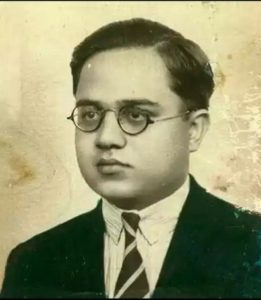Annihilation of Caste, Introduction: The caste system in India has existed from ancient times, however as time passed and we entered into the medieval period, early-modern period and then finally in today’s modern period, it has established its presence permanently. No one, willingly or even unwillingly can escape from its shackles. It has become the basis on which any man is given his position in our hierarchical society.

It is a system established by the so-called ‘Hindus’, where the ‘Brahmans’ are considered to be the elites and the Sudras the untouchables or say the ‘Dalits’. To explain the word Dalit further- it refers to ‘the broken class.’ It comprises the people who are subjugated, the ones who are deprived of those fundamental rights that any mediocre Brahmin, or Kshatriya or even a Vaishya enjoys. Where the word Dalit should signify ‘da-lit’, i.e, ‘the illumined,’ it has become more like a mocking term meant for a sect of people who anyways are victims to the practices of the aristocratic Hindus.
The only question that comes to anybody’s mind is that who were these elite people who in the first place even created such a system that would bring down the national unity and integrity? Who in the second place gave them the right to decide and declare which person should do what works? How can they forget that at the end we all are humans born out of the same land with the same color of blood?
Similar questions came to the mind of Dr. B. R Ambedkar, the man who campaigned against the social discrimination of the untouchables, fought for their rights alone, inspired many movements like the Dalit Buddhist Movement to get the Dalits equal rights and recognition in the society. Unlike Gandhi, Ambedkar didn’t have much support by the masses which made his journey and fight very difficult. Apart from launching movements and campaigning, he resorted to using his knowledge and education in writing about the grievances of the people. In the span of his revolt, he wrote a number of books, essays, papers, and articles in which he spoke of his hurt sentiments because of the caste system. His works included, ‘Castes in India: Their Mechanism, Genesis and Development; Riddles in Hinduism, The Buddha, and his Dhamma; and The Annihilation of Caste being his most opposed work which marked history.
The Annihilation of Caste was actually a speech prepared by Ambedkar which he was going to deliver at an annual conference (1936) of which he was the President and was invited by the secretary of the Jat-Pat Todak Mandal, which was an anti-caste Hindu reformist group organization based in Lahore. However, before Ambedkar could have delivered his speech the members of the group had revised the text in Ambedkar’s speech.
Ambedkar in this speech was openly and bluntly going to talk about the atrocities faced by the Dalits and untouchables and was going to criticize the Hindus and demand that this caste discriminatory system should be abolished, should be destructed, should be annihilated. The Mandal members found the text of his speech extremely venomous and wanted to prevent his thoughts to reach the masses because it could have awakened the Dalits to resort in unity and fight for their rights. So the members of the group took back the invitation from Ambedkar. Now, this act of theirs made Ambedkar’s followers and the lower class in general furious, and because the Mandal feared that violence might break out against them they at last called off the conference.
What needs attention here is the fact that by 1936, Ambedkar had already established his opinions and ideas towards the Hindu religion and he had already campaigned against a lot of things. Which meant he had become a known figure across the country, which meant that even the Mandal knew about his ideologies.
They knew that if they invite him he would definitely talk regarding the abolition of the system. So the question, why in the first place did they choose to call him if they couldn’t have heard anything against the Hindus? Was it just to humiliate him? Or was it to show his followers and people in general that they wouldn’t consider anybody mocking the policies which have
existed past so many decades?
Whatever the reason, Ambedkar was definitely upset with all this because he knew that this was a chance for him to make the people know his views on the problems created by the caste system.
However, he had printed copies of his speech under the name, ‘Annihilation of Caste.’ ( BUY HERE) The publishing again posed a challenge for Ambedkar. He wanted to get the copies printed from Bombay but the Mandal decided to get it done from Lahore because of some economy problem. In the end, Ambedkar got 1500 copies of his speech printed at his own text. The book was criticized highly and even Gandhi made numerous comments and justifications on it. The book was revised and edited again by Ambedkar in which he replied to many of Gandhi’s comments. And from then on a lot of editions and interpretations of the text have been published by various writers like Arundhati Roy who also express their pain which Ambedkar felt. However, the original text is not present in its full-fledged raw form anymore. Some ideas have been removed which some people wanted to prevent from reaching the people.
What remains even today in wholesome are the struggles of the Dalits against the upper class and Ambedkar’s efforts and words which have become confined to merely the books and essays.
Reference
Literature Student at Delhi University!
